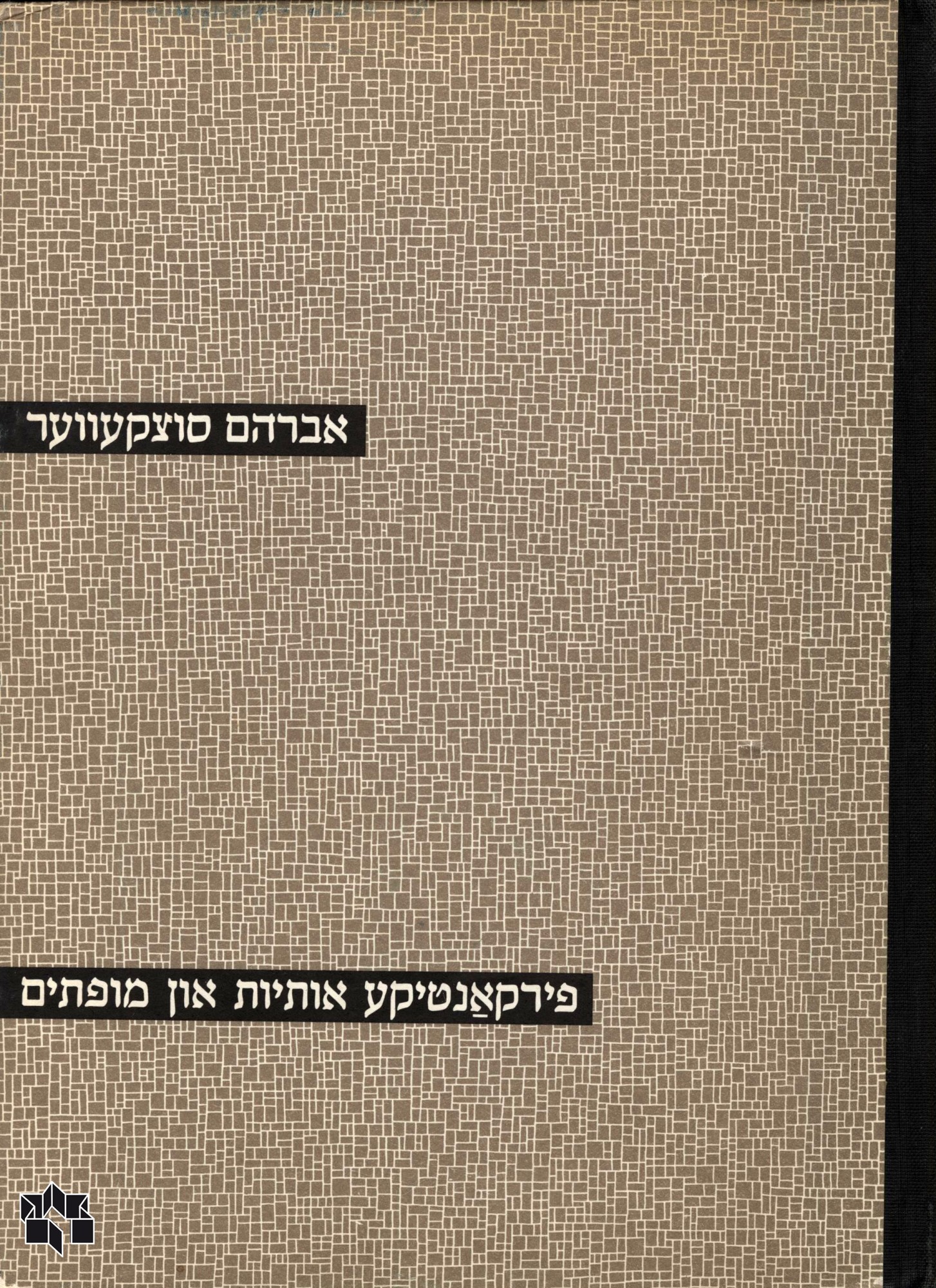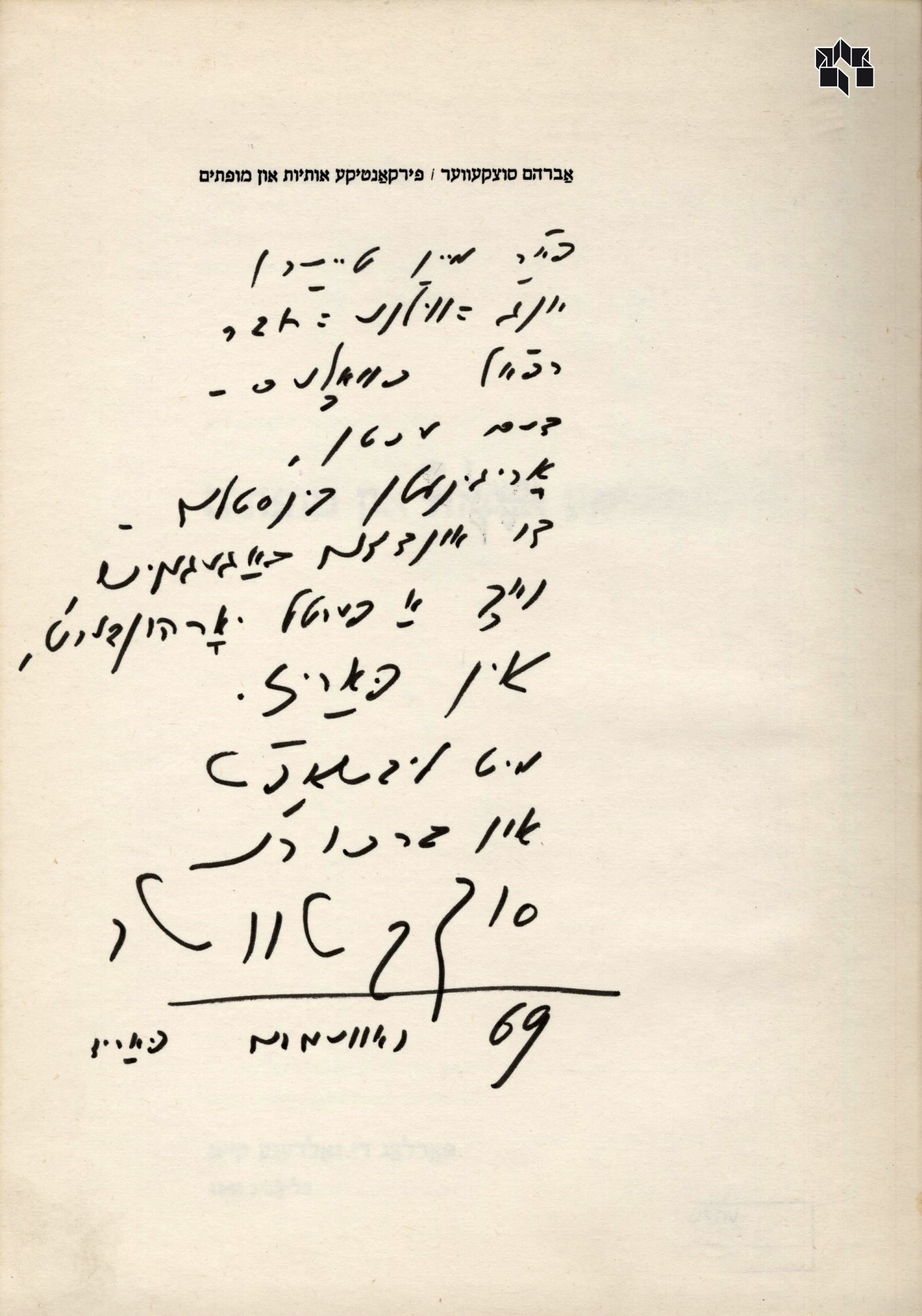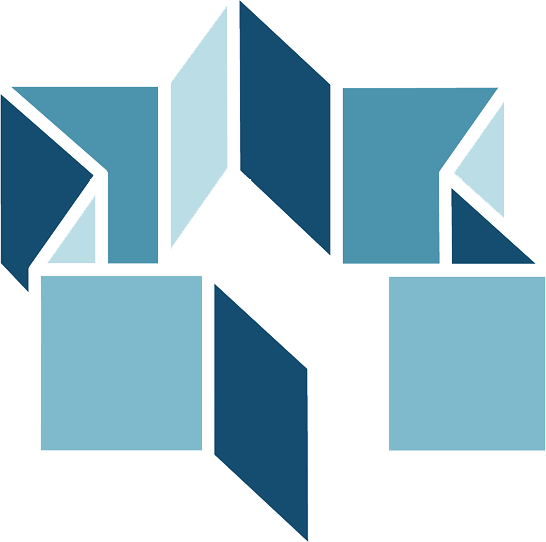Exhibit of the month |
← |
Published: 2024-02-02

Abraham Sutzkever, Firkantike oysyes un moyfsim (Quadrilateral Letters and Signs)
Poems from 1964 to 1967, Tel Aviv: Di goldene keyt, 1968, Acc. No. VŽM 9331
Last year, the exhibited book of poems by Abraham Sutzkever (1913—2010), a classic of Yiddish literature and one of the pioneers of Jewish introspective literature in Lithuania, became part of the collections of the Vilna Gaon Museum of Jewish History. Thanks to the donation made by the sons of artist Raphael Chwoles, a member of the group of modernist interwar Jewish artists and writers Yung Vilne (Young Vilnius), the book became part of the museum’s valuables that make up the collection of writings related to the Yung Vilne group. Just like many other books donated to the museum by the artist's sons, Sutzkever's book of poems Firkantike oysyes un moyfsim, published in Israel in 1968, symbolically immortalised the meeting of the two members of Yung Vilne who survived the Holocaust. In the dedication to Chwoles written in Yiddish, Sutzkever describes the meeting of the two friends and the memories related to being part of the artistic group:

‘To my dear Yung Vilne friend Rafael Chwoles, an authentic and original artist,
on the occasion of our meeting in Paris after a quarter of a century.
on the occasion of our meeting in Paris after a quarter of a century.
With love and best wishes.
Sutzkever, November 1969, Paris’
Yet another interesting thing is that the book features a portrait of Sutzkever created by Litvak artist Marc Chagall. Moreover, it was published in Tel Aviv, by Di goldene keyt (The golden chain) publishing house, which was headed by Sutzkever, who lived in Tel Aviv at the time.
The dominant features of Sutzkever's biography and artwork serve as clear indication of the place this book held in the poet’s creative life before 1968. Sutzkever was born into a family of Hasidic rabbis. During World War I, as a child, he was exiled to Siberia together with his parents. As of 1920, he lived and studied in Vilnius as an external student of Vilnius University. There he studied literature and became a member of Yung Vilne, the group of Jewish avant-garde artists and writers. Sutzkever’s first poems, inspired by the poetry of Moyshe Kulbak, who was a native of Smurgainys, were published in Jewish newspapers in Vilnius and Warsaw around 1933. His first book of poetry, Lider (Songs), was published in 1937, and he was immediately recognized to be a rising star of Yiddish literature. In 1940, Sutzkever published a compilation of poetry titled Valdiks, which celebrates the beauty of nature. After World War II broke out, the poet was imprisoned in the Vilna Ghetto from which he later escaped and joined the partisan squads who were fighting the Nazis. During and after the war, together with writer Shmerke Kacherginskis and other Jewish intelligentsia, he was collecting the surviving YIVO materials. After the war Sutzkever together with Shmerke Kacherginskis founded a Jewish Museum in Vilnius. His book Di festung (Fortress) was published in 1945, and Lider fun geto (Songs from the Ghetto) was published in 1946. At the same time in Paris, his memoirs Vegn Vilner geto (From the Vilna Ghetto) were published. In 1946, Sutzkever testified at the Nuremberg trial. He arrived in Palestine in 1947 and settled in Tel Aviv. From 1949, Sutzkever edited the literary magazine Di goldene keyt. His books Di yidishe gas (The Jewish Street) and Geheymshtot (Secret City) were published there in 1948. They depict the life of Vilnius Jews, the gloomy everyday life of the ghetto, the darkness of the sewer wells, the greatness of the unbroken spirit and the resistance to the Nazis. Later, the following compilations of his poems were published: In fayer vogn (In the Chariot of Fire, 1952), Sibir (with illustrations by Marc Chagall, 1953), Ode tsu der toyb (Ode to the Dove, 1955), In midbor Sinai (In the Sinai Desert, 1956), Gaystike erd (Land of the Spirit, 1961), and Firkantike oysyes un moyfsim (Quadrilateral Letters and Signs, 1968).
Prepared by Ilona Murauskaitė, curator of written collections at VGMJH
© From the collections of VGMJH
| ↑ | ← |
